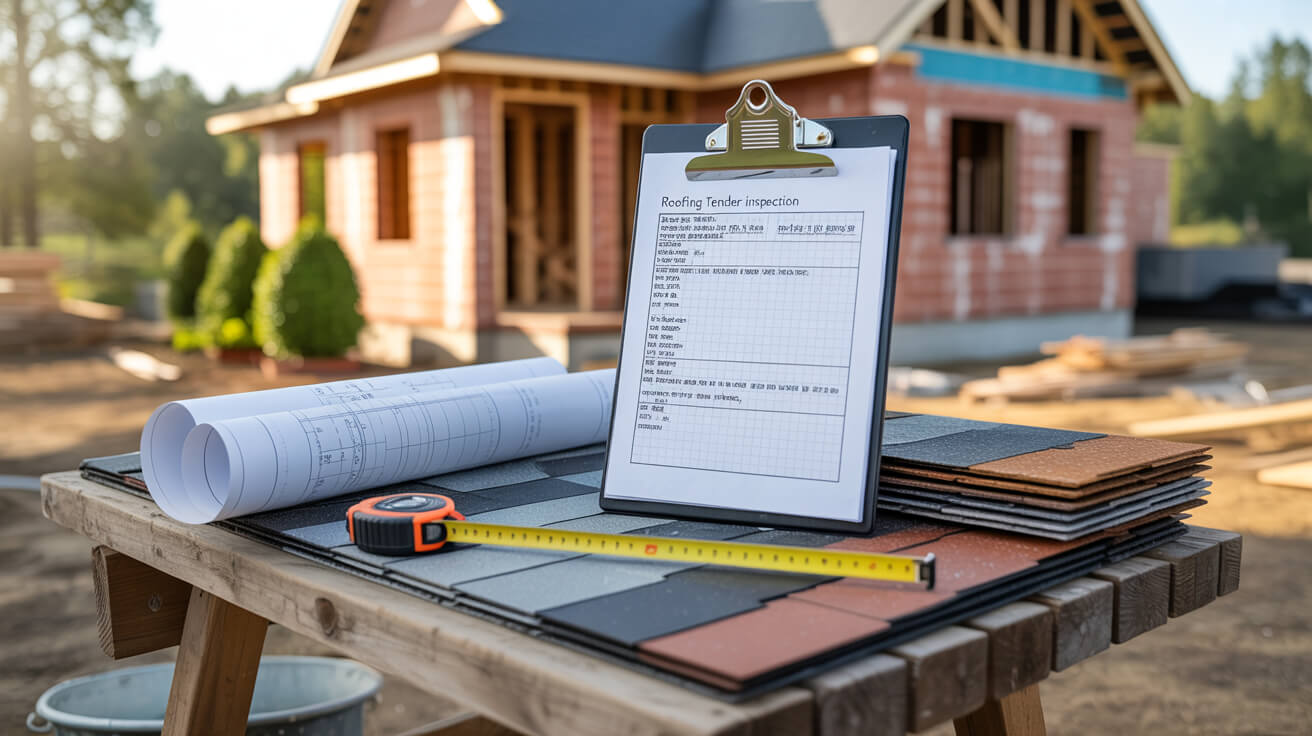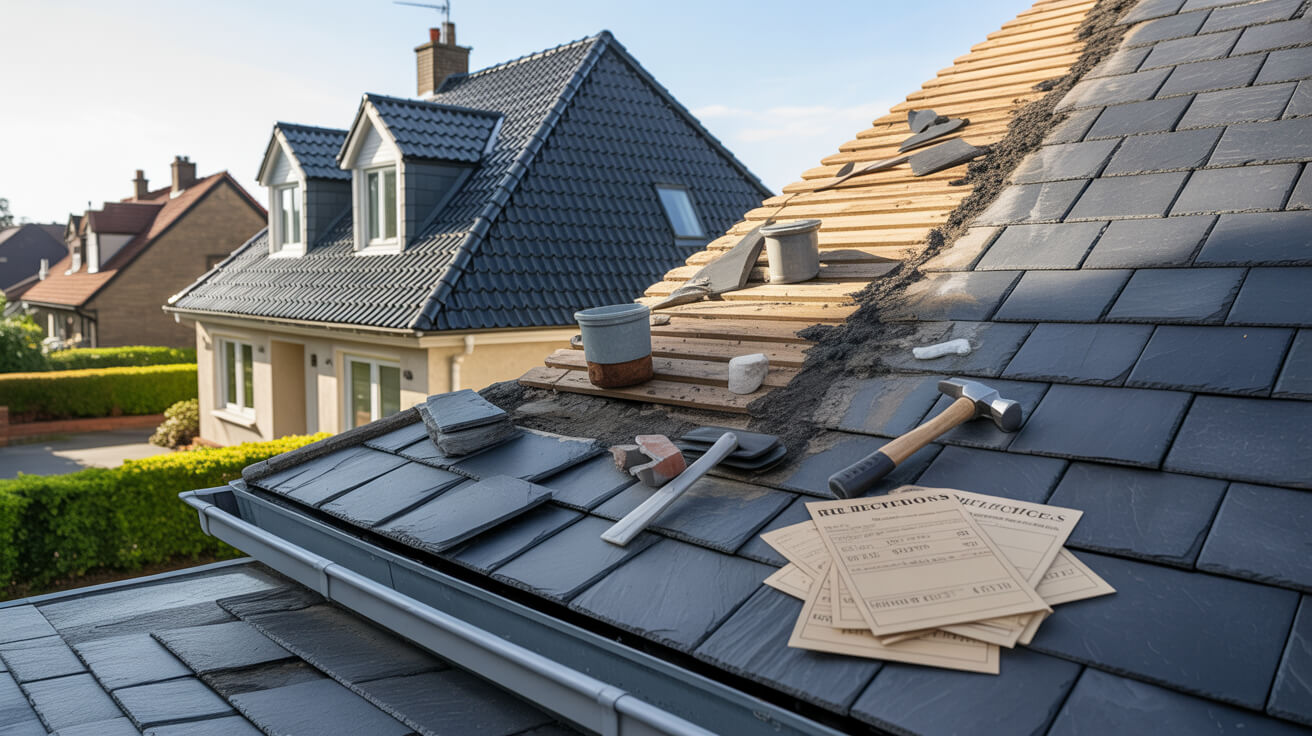 Roofing Building Regulations 2024 What Architects & Developers Must Know
Roofing Building Regulations 2024 What Architects & Developers Must Know
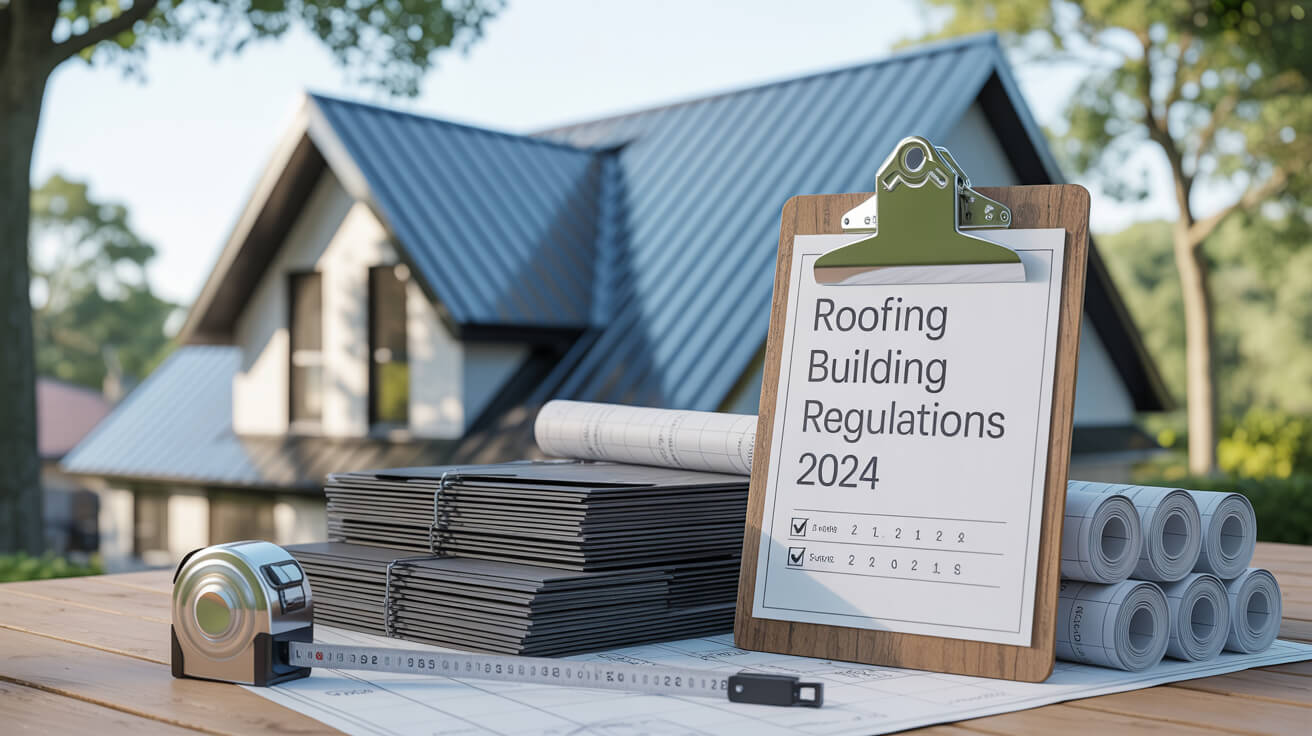
The 2024 Update — Defining a New Standard, Not Just a New Box-Tick
Regulatory changes have recalibrated how architects, developers, and contractors approach roofing specifications—and not as a formality or late-stage hurdle. The 2024 roofing building regulations, spanning BS5534, BS6229, and new Part L energy criteria, now require that compliance is designed-in from the earliest project concepts. For any organization overseeing complex or high-value builds, this transforms risk management, cost allocation, and project sequencing into strategic assets.
A design team that understands these evolving standards up front avoids downstream standoffs, schedule overruns, and “fix it later” costs that can spiral out of control. From first slab to final handover, each regulatory clause now shapes material selection, ventilation, insulation, wind uplift, airtightness, roof drainage, and crucial site documentation. These standards are not simply codes to pass—they are project-protective frameworks, drawn from what has proven to work best in the field and refined to close common loopholes.
Key 2024 advancements:
- BS5534 strengthens tile fixing and wind uplift protection for pitched roofs, demanding project-specific fixing schedules and site-calibrated calculations.
- BS6229 enforces smart drainage and thermal bridge prevention, setting new rules for flat roof continuity and insulation.
- Part L mandates tighter U-values, upgraded insulation, and full airtightness for both new builds and significant refurbishments—raising the bar for thermal performance and lifecycle cost efficiency.
- Fire Safety Requirements are upgraded, with new rules on assembly continuity and flame spread resistance, especially for multi-unit developments.
With every update, compliance becomes inseparable from quality assurance and cost control. Investing early in compliance is now proven to cut average sign-off delays and slash rework, reinforcing design credibility and financial predictability.
Don’t risk project vulnerabilities—download our 2024 Compliance Checklist or consult with JG Leadwork and Roofing for a mapped-out path to project certainty.
How Do Current Roofing Regulations Define Compliance?
Compliance Is Construction’s New Quality Benchmark
The framework for roofing compliance in 2024 integrates safety, energy performance, and traceable material standards into a single, audit-ready workflow. It is the synergy between BS5534 (pitched roofing), BS6229 (flat roofing), and Part L (energy and insulation efficiency) that truly defines how modern projects achieve approval and maintain resilience against risk or unexpected costs.
Pillars of the 2024 Compliance Landscape:
- BS5534:
- Requires bespoke fixing schedules for every tile and slate roof, tied directly to project wind mapping and exposure, not just manufacturer defaults.
- Mandates minimum performance levels for underlay, mechanical fixings, and continuous ridge/eaves ventilation.
- BS6229:
- Dictates minimum falls for drainage, measures to combat thermal bridging, and rules for insulation continuity.
- Integrates vapour control and waterproofing checks to reduce condensation and hidden roof damage.
- Part L (Energy):
- Tightens U-values (lower is better) and sets standards for the continuous envelope, demanding airtightness and robust insulation at every junction and interface.
- Updates allowable thermal performance for both new and refurbishment projects.
Compliance Process:
To achieve seamless audit trails and warranty approvals, every stage must be evidenced:
- Project-specific fixation and wind calculations
- Drainage proofs and insulation overlays
- Documentation of all hidden layers (photo-verified, timestamped)
- As-built material certifications and installer accreditations
This interdisciplinary system isn’t bureaucracy for its own sake—it’s a protective mechanism for project delivery, reputation, and client confidence.
Secure a zero-gap compliance plan—JG Leadwork and Roofing can tailor every checklist and compliance workflow to your exact project needs.
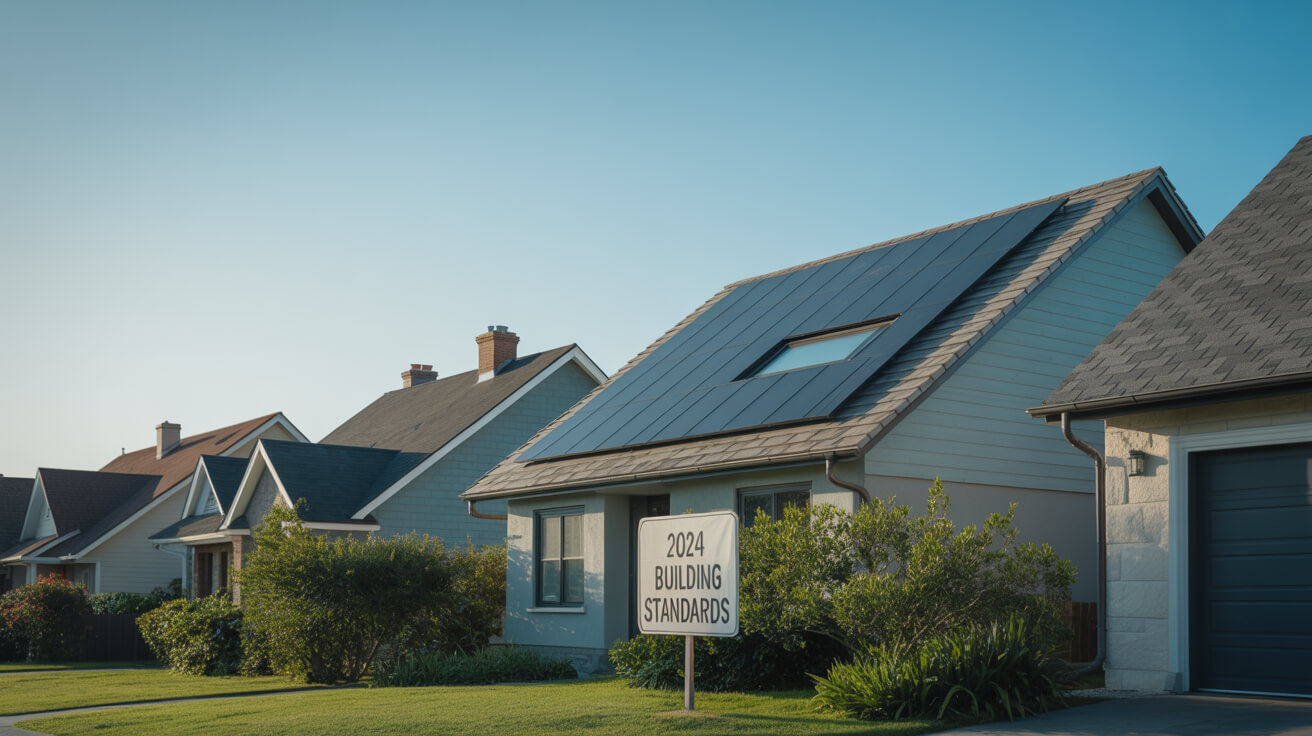
How Do the 2024 Updates Transform Roofing Standards?
From Tolerance to Precision: Raising the Bar with Actionable Mandates
The new cycle of roofing regulations replaces ambiguity with actionable, measurable standards. This recalibration turns former tolerance zones into explicit pass/fail clauses, requiring technical teams to evidence each decision with robust data and documentation.
2024 Regulation Disruptors:
- Tile & Slate Fixings (BS5534):
No more assuming default settings. Projects must prove fixing adequacy by wind zone, tile profile, and location. Contractors install per bespoke schedules—not tradition—because penalties for missed calculations are now enforced and visible at sign-off.
- Insulation & Drainage (BS6229):
Flat roofs demand continuous, specification-matched insulation and robust upstand detailing. Drainage must deliver within new minimum fall rules, and interfaces are to be checked for bridging/condensation hazards. Failure is now documented early, not caught in latent defect periods.
- Part L Stringency:
Lower U-values and airtightness are enshrined. Devil’s in the details—continuous vapour control and site-verified air testing at each junction, not just “as designed.”
- Fire Safety Matrix:
Specific roof covering classifications per boundary, exposure, and assembly type. Photos, test certifications, and contractor sign-off are prerequisites.
The Upside for High-Performance Teams:
- Integrating the new standards reduces hidden remedials.:
- Projects signed off 3–4 weeks faster on average with mapped-out documentation.:
- Warranty providers and insurers increase trust when all compliance elements are evidenced, reducing long-term project risk and claim disputes.:
Reference our 2024 Regulation Impact Guide to prevent overlooked details and win first-time sign-off.
How Do the Updates Affect Project Planning and Costs?
Sequencing Compliance for Predictability—Not Just for Approval
Each update in roofing regulations has profound impact beyond documentation: it shapes technical design, cost certainty, and operational risk. For specifiers, compliance must begin at the concept phase—not emerge late in tender or worse, during construction.
Why Proactive Alignment Matters:
- Budget Accuracy:
By mapping compliance to every specification, you avoid the cost-doubling mistake—where a single failed clause triggers multiple site revisits and extended overheads. Design, procurement, and delivery all benefit from procurement that automatically matches specification to current rules.
- Risk Mitigation:
- Teams that use up-to-date compliance templates report up to a 60% fall in defect notices on roofing projects and cut average cycle times for audits by close to 50%.
- Scheduling Gains:
- Proactive compliance cuts waiting periods for materials, designs, and site approvals. Key activities like airtightness assessments and insulation tie-ins can be properly sequenced to avoid bottlenecks.
- Reputation & Valuation:
- Early-stage compliance means faster lender sign-offs and fewer disputes with insurers. Completed projects come in with fewer “legacy issues” dragging out the final valuation.
Best Practice:
- Assign compliance coordination roles early.
- Demand traceable documentation from every installer and supplier.
- Use digital platforms for audit trails and revision tracking.
- Build-in flexible scheduling to accommodate compliance checks at every gate.
Optimize every aspect of cost and schedule—reach out to JG Leadwork and Roofing for design-phase compliance alignment.
How Do Frequent Errors Affect Your Roofing Compliance?
Turning Hidden Traps into Evidence-Based Wins
Root causes of compliance failure aren’t in obscure technicalities—they’re baked into common habits: cut-and-paste tender details, skipped data sheets, oversight of hidden layers, or relying on “standard” fixings when each roof exposure could be different.
Typical Pitfalls:
- Assuming legacy “compliant” details are still valid.:
- Missing site-specific wind and drainage calculations.:
- Partial or absent photographic documentation of hidden work.:
- Failure to gather all necessary certifications and signatures as work is completed—not weeks after.:
This covert risk accumulates silently, surfacing as non-payment, warranty taint, or expensive legal mediation. The most successful teams flip this script by viewing compliance as live process management—every stage documented, every detail mapped, every deviation resolved before it impacts the project.
Data Point:
Projects run with live compliance tracking see a 2.5x increase in on-time handover versus those who address documentation after the fact.
Correction Pathways:
- Require training and sign-off for every installation team.
- Maintain a living compliance checklist—updated as standards change, not just file-and-forget.
- Integrate fail-safe reviews ahead of each project stage, not just at the close.
Outmaneuver compliance traps—discover how JG Leadwork and Roofing’s live tracking protocols deliver a seamless handover every time.
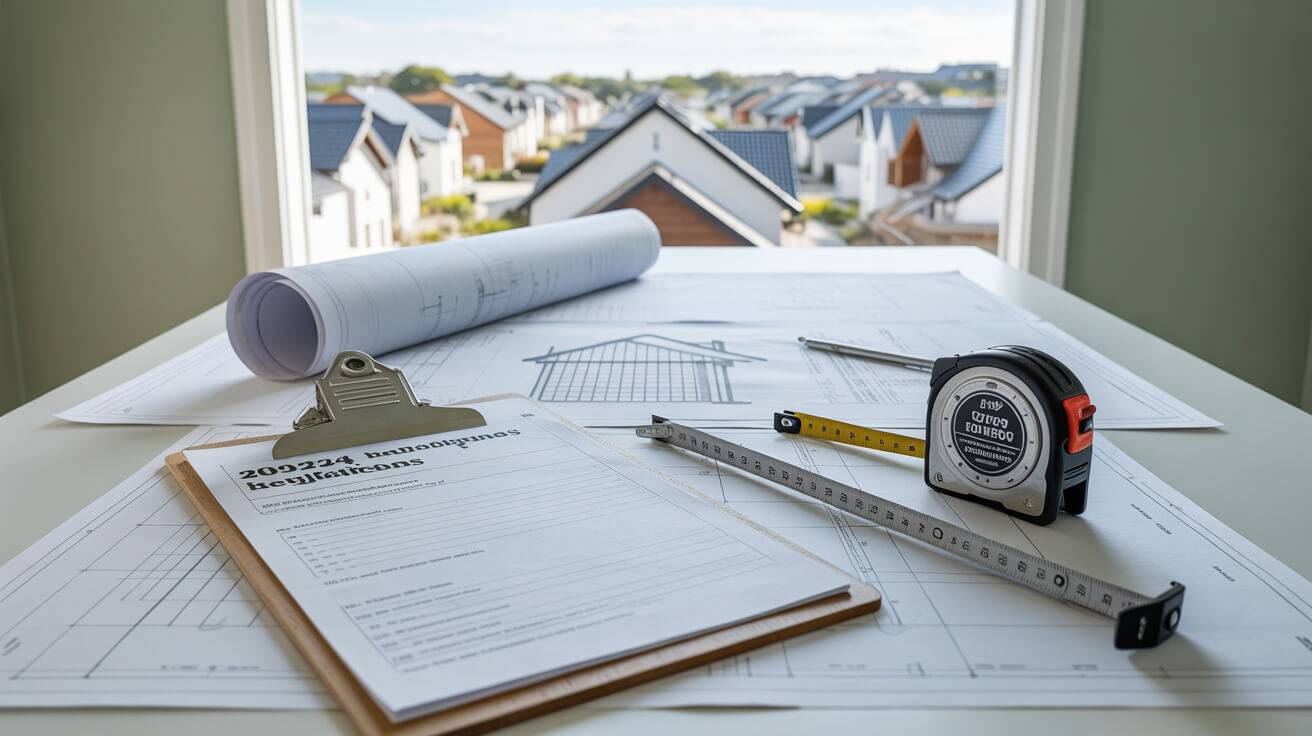
What Methods Secure End-to-End Regulatory Compliance?
Building Resilience via Systemized, Documented Protocols
Total compliance starts with clarity and finish accountability—from pre-design audits to final as-built sign-offs. The 2024 regulatory cycle raises standards, not just for what is built, but for how evidence of its quality is tracked, shared, and preserved.
Actionable Methods:
- Initiate pre-project audits mapping every standard to specification.
- Deploy digital compliance management:
- Capture and store photographic logs at every inspection stage.
- Tag each record with the relevant regulation and date.
- Schedule recurring training—update in line with annual regulatory shifts.
- Assign compliance champions across your team to own close-out documentation.
- Implement periodic third-party audits for unbiased review and insurance alignment.
Superior Results Seen:
- Faster audit passes
- Reduced rework
- Higher insurer and lender acceptance
- Clear chain-of-proof for all contract stakeholders
Gain maximum benefit—request JG Leadwork and Roofing’s Compliance Toolkit for digital audit templates and training modules.
What Critical Questions Clarify the Regulatory Landscape?
Addressing the “What, How, and When” That Shape Every Successful Roofing Project
What are the most significant changes and why do they matter?
- Changes in wind and fire performance (BS5534):
- New drainage and insulation proofs (BS6229):
- Enhanced U-value and airtightness targets (Part L):
- Upgraded documentation logic for audits and warranties:
How can you map regulation to your specific project context?
- By roof type, exposure, project size, value, and insurer requirements:
- Engage partners (like JG Leadwork and Roofing) with experience in both new build and retrofit compliance mapping:
What documentation is now non-negotiable?
- Wind zone/fixings proofs
- Full insulation and vapour control logs
- Installer and material certification records, time-stamped on install—not after
- Insurer/warranty-side sign-off forms
What are missed frequently?
- Failing to record hidden works
- Submitting “final” documentation with missing, inaccurate, or unverifiable data
- Leaving post-install disputes to the legal or warranty phase
Direct outcomes: Projects with mapped compliance and live documentation see 3x fewer legal/insurer disputes at final valuation—saving both time and reputation.
Equip your team with the Roofing Compliance Q&A Bank—from JG Leadwork and Roofing for immediate, project-ready answers.
Book Your Free Consultation With JG Leadwork and Roofing Today
Proactive mastery of the 2024 roofing regulations futureproofs your projects with tangible, defensible certainty. JG Leadwork and Roofing offer comprehensive guidance—from pre-design reviews and supplier vetting to digital compliance management and audit sign-off. This is not generic consulting—it’s tailored oversight that aligns specification, workflow, and documentation in dynamic sync with regulatory change.
Every site faces unique exposure conditions, material variables, and documentation needs. Our process delivers a seamless experience: no missing paperwork, no “hidden” non-compliance, and no drawn-out disputes or avoidable delays.
- Free compliance roadmap consultation:
- Detailed, project-matched checklists:
- Real-time digital audit systems:
- Insurer-ready documentation at handover:
Advance your build with certainty, not risk. Schedule your free consultation with JG Leadwork and Roofing and discover how aligned compliance unlocks long-term value, clarity, and peace of mind on every project.
Frequently Asked Questions
What are the most significant changes to roofing regulations in 2024, and how should your projects adapt?
Lifting Compliance from Afterthought to Asset
The 2024 roofing regulatory overhaul reframes compliance from a tick-box exercise to a daily operational safeguard. For architects and developers, these updates mean every specification and site decision must be defended by both data and process—no more papering over gaps or retrofitting standards at sign-off.
Key 2024 Regulatory Upgrades:
- BS5534: —now enforces project-specific wind load & fixing schedules, requiring real, site-calibrated calculations rather than by-the-book assumptions. Tile, slate, and mechanical fixings are now mapped to precise risk factors.
- BS6229: —cracks down on drainage ambiguity and thermal bridges; continuity of insulation, fall gradients, and upstand integrity must be both documented and photographed—unseen gaps are no longer tolerated.
- Part L: —drives a step-change in energy performance: U-value targets drop, continuous insulation and airtightness become contractual, and new airtightness testing is enforced for all roof types (pitched/flat).
- Fire Safety: —mandates enhanced boundary resistance and continuity, forcing teams to coordinate fire strategies with real construction sequencing and bring assembly certification into daylight.
These regulations aren’t just bureaucratic escalations—they are preemptive risk eliminators. Miss the new continuity requirements and your asset could face costly remedials, retesting, or insurance refusal. Think of these shifts as the regulatory backbone protecting your timeline and bottom line.
Why Delayed Adaptation Costs More than Compliance Itself
Relying on legacy details or inherited “standard” templates breeds a hidden non-compliance tax: diagnostic delays, audits that stall sign-off, and last-minute scramble to collect missed documentation. Proactive adoption—such as integrating wind-mapping and insulation continuity from RIBA Stage 2—removes these friction points, reduces valuation disputes, and accelerates lending approval for your builds.
Immediate Impacts:
- Reduced project delays from rework and post-completion snag lists
- Fewer insurance exclusions due to missing certification or incomplete documentation
- Improved reputation with lenders and stakeholders as a “compliance first” operator
Have you mapped your project’s processes to these new benchmarks, or is unseen risk sabotaging your delivery before it begins? Consider auditing your workflow with a compliance specialist for evidence-backed assurance that stands up under real scrutiny.
How do current roofing standards define effective compliance on-site and in documentation?
From “Built Right” to “Documented Right”: The New Compliance Reality
Achieving compliance in 2024 means far more than using approved materials; it’s about continuous, visible proof that every design and installation step meets the combined demands of BS5534, BS6229, and Part L—on time, and in the right format.
What Compliance Requires Right Now:
- Submittals & Procurement Alignment: —Every product, membrane, and fixing must match technical data to project specification and wind/thermal mapping. Supply-chain shortcuts are no longer accepted.
- On-Site Quality Proof:
- Mechanical fixings? Count and placard per schedule, no blind trust.
- Insulation? No substitution or “near enough” edges. Continuity and junctions are documented with timestamped photo logs.
- Drainage falls, vapour protocols, airtightness? Measured and recorded by stage—not after the fact.
- Paper Trail:
- All manufacturer certifications, site wind/drainage calculations, and installer accreditations attached to as-built folders.
- Compliance isn’t just “built”—it’s narrated in a stepwise, photo-rich story, instantly ready for building control and warranty providers.
Why This Matters:
A single gap—a missing certificate, out-of-tolerance fixing pattern, or unproven insulation junction—can spiral from trivial delay to six-figure exposure, tying up capex and undermining market launches.
Organizations embedding digital compliance flows and team-level ownership of documentation now achieve sign-off up to 35% faster, and report fewer post-handover defects. Have your team and supply chain been brought into this modern compliance ecosystem?
What 2024 regulation upgrades most impact materials, installation flow, and approval timelines?
Substitution, Sequencing, and the End of “Standard Detail”
The biggest regulatory disruptor isn’t a single clause, but the intersection of exacting material choice, meticulously sequenced installation, and audit-ready as-built records—all enforced with real-world penalty and incentive.
Headline Shifts:
- Materials: —Prescribed fixings, tested membranes, and true thermal continuity mean that “approved equals accepted” no longer applies. Spot-market substitutes now carry non-compliance risk unless re-tested for the project.
- Installation Timelines—:
- Staged photo verification is non-optional for covered layers.
- Installer accreditations and training logs must be reviewed before—not after—deploying crews.
- Sequential checks (wind mapping > fixing > insulation > air/vapour test > drainage) get embedded as part of scheduling, locking out “fit and forget” errors.
- Sign-Off Windows Tighten—:
- No more “fix in post.” Remedial work is traceable, delays are noted, and insurance sign-off now keys directly to digital record completeness.
- Asset managers and insurers increasingly require integrated compliance logic on larger projects before final payment.
Table: Pre- and Post-Regulation Practices
| Step | Pre-2024 (Legacy) | 2024 (Compliant) |
|---|---|---|
| Tile Fixing | Default schedule | Site-specific mapping |
| Insulation | Thickness-based | Airtight layer continuity |
| Documentation | Handover chase | Staged, live, photo-verified |
| Audit | After build | At every critical stage |
| Approvals | Ad hoc | Checklists, sequencing, proof |
By embedding staged compliance checkpoints and product tracking, you control your approval destiny—avoiding costly catch-up or rejections. Is every element of your memory folder robust, digital, and mapped by a compliance-trained lead?
How do 2024 regulations reshape design, cost structure, and project risk?
Design, Cost, and Risk—A Unified Compliance Equation
Stakeholders accustomed to viewing compliance as an end-of-project burden will now see it as the driver for smarter, safer design—and bankable cost predictability.
Design Evolution:
- Early-stage specifications now demand explicit wind and exposure analysis, material compatibility checks, and insulation interface mapping.
- Energy and airtightness targets necessitate a more holistic review of the roof envelope—nobody can “value engineer out” compliance when audit trails are digital and multi-stakeholder.
Cost Reality:
- Delaying documentation, relying on post-installation checks, or assuming legacy detail validity opens a direct channel to costly rework, extended loan draws, or failed valuations.
- Proactive compliance is now a cost-saver, not a paperwork tax. Projects managed with real-time compliance checklists report up to 18% less post-completion spend and faster end-of-loan sign-off.
Risk Shift:
- Regulatory gaps no longer just affect handovers—they now bring insurance risk, warranty gaps, and cashflow squeeze.
- Major funds, asset managers, and institutional buyers increasingly scan compliance history as an underwriting factor—turning robust procedures from optional to existential.
What Moves the Needle:
- Pre-audit your chain of documentation flow.
- Schedule compliance at every gate, not only at the finish line.
- Make your team’s compliance record part of your project’s marketing package for lenders and asset buyers.
Are you still treating compliance as a file to complete, or as a strategic chain woven through every decision and every day?
Which compliance pitfalls cause the most delays, disputes, or audit failures—and how are they eliminated?
Patterns of Failure—How Tiny Gaps Multiply into Big Risk
Year after year, the same invisible traps sabotage projects: assuming last year’s standards still apply, skipping site-specific calculations, “Speed First, Proof Later” on documentation, or leaving compliance to the last sign-off meeting.
Recurring Mistakes:
- Using legacy “standard details” that do not reflect new wind, insulation, or fire rules.
- Failing to capture staged, timestamped photo documentation—leaving proof gaps that can void insurance and delay final payment.
- Not validating supply chain credentials or documentation until after builds are complete.
- Disconnected handover processes, with slow or partial digital records that fail the first real audit.
Resolution Pathways:
- Invest in team training—and build new checklists that align to current standards, not assumptions.
- Insist on digital workflow management for all compliance records, making every inspection and installation checkpoint verify-in real time.
- Engage partners who treat compliance as a process, not a file dump—abolishing the “last-minute scramble” that has sunk thousands of build handovers in the last five years.
Case Snapshot:
A major southern developer lost an eight-figure insurance renewal due to eight missing insulation junction photos and unverified installer accreditations. A competitor’s same-day digital checklist produced sign-off in hours, not months.
Map your compliance as a real-time story, not a scramble—and your project handover becomes an asset, not a liability.
What proven strategies ensure seamless, end-to-end compliance with the 2024 roofing regulations?
Compliance as a Process—From Risk Management to Brand Differentiator
The teams excelling in this regulatory environment are embedding compliance as a real-time function, not a reactive afterthought. Their difference? A culture of proactive verification and staged, verified documentation.
Practical Strategies for Complete Compliance: 1. Run compliance audits at RIBA Stages 2/3 and again before main construction. 2. Deploy new wave digital tools (workflow and photographic logging platforms) for checklists and staged approval. 3. Mandate training refreshes annually—standards now change mid-project; static knowledge fails. 4. Track documentation flows for every material, fixing, and membrane—don’t wait until a month ahead of handover. 5. Solicit insurer/asset buyer review pre-completion—make compliance a net-positive on funding schedules and project exit.
Checklist Table for Rapid Compliance Integration
| Action | Frequency | Responsible |
|---|---|---|
| Audit plan review | 2x project | Compliance Lead |
| Insulation inspection | Each new stage | Installer |
| Fixing photo capture | Each section | Site Foreman |
| Document upload | Real-time/live | Office/PM |
| Certification cross-check | Pre-pay & handover | Admin/PM |
The era of “compliance in a binder” is gone. Interactive, real-time compliance flows are not just an internal defense—they are why top developers win approvals, premium buyers, and smooth insurance coverage.
Teams using digital compliance as a daily tool don’t just survive audit season—they set the benchmark for the sector.

